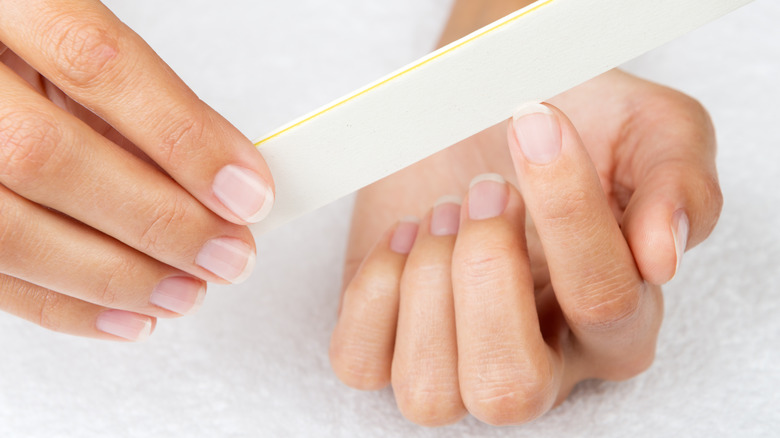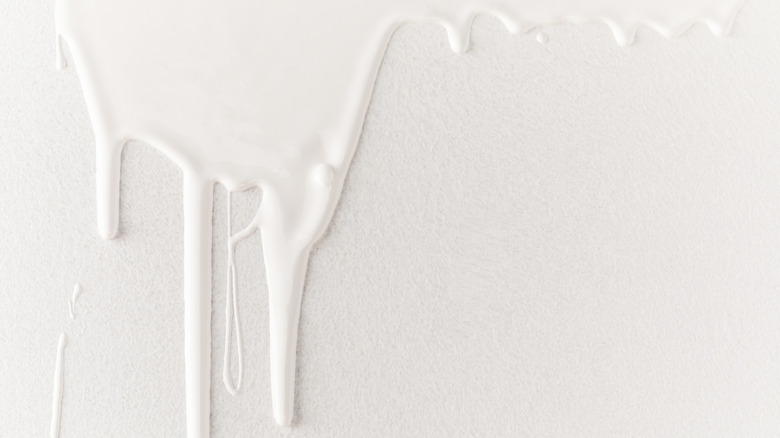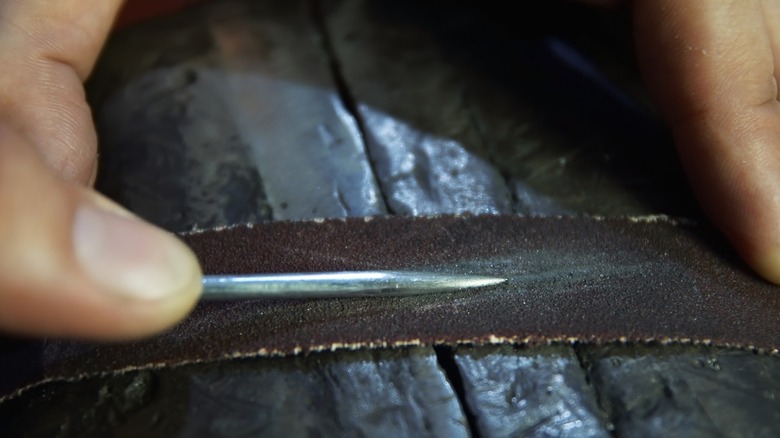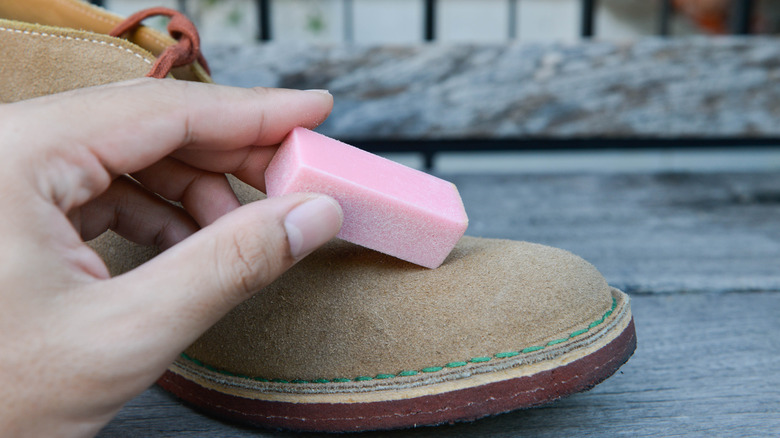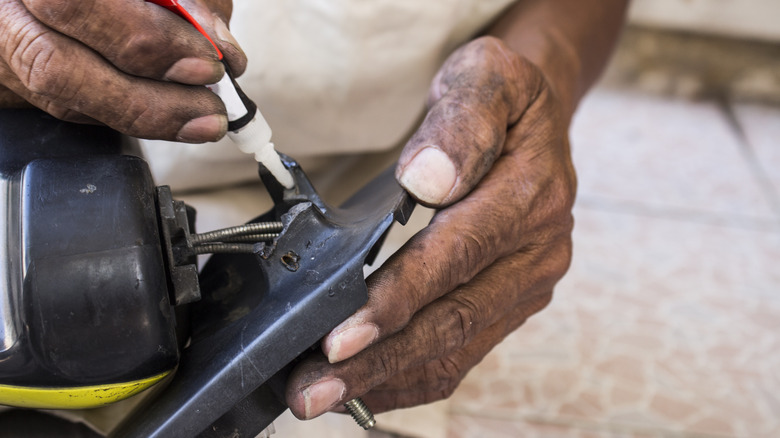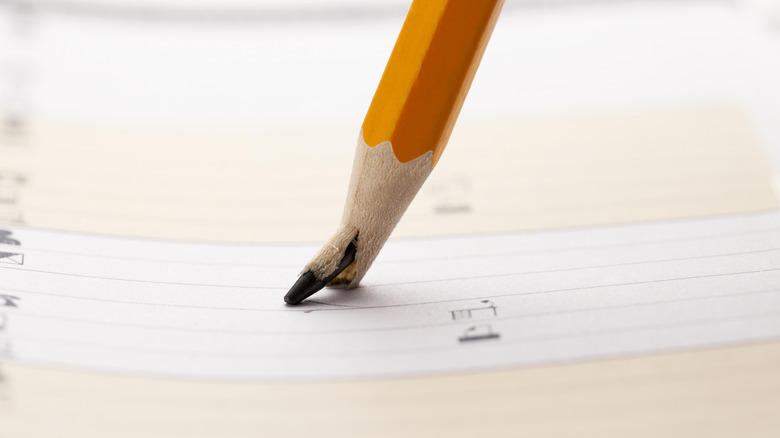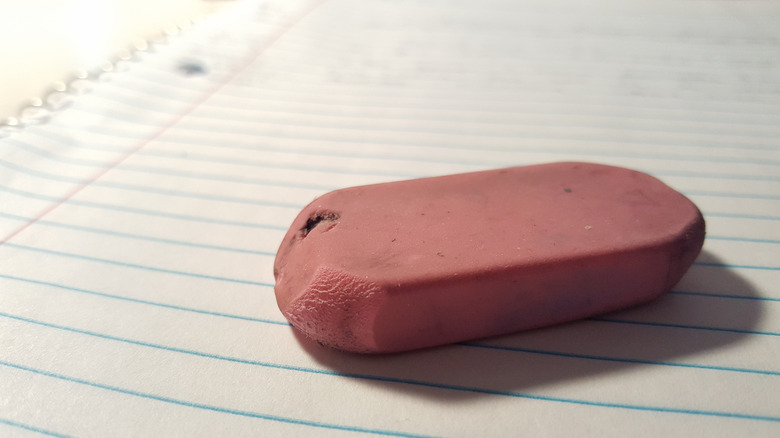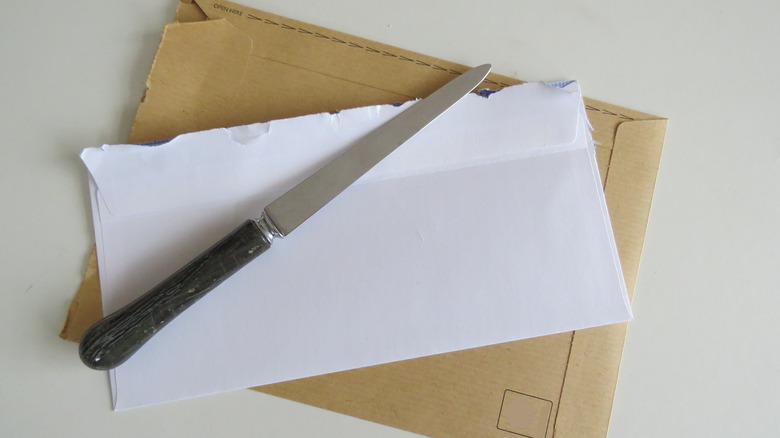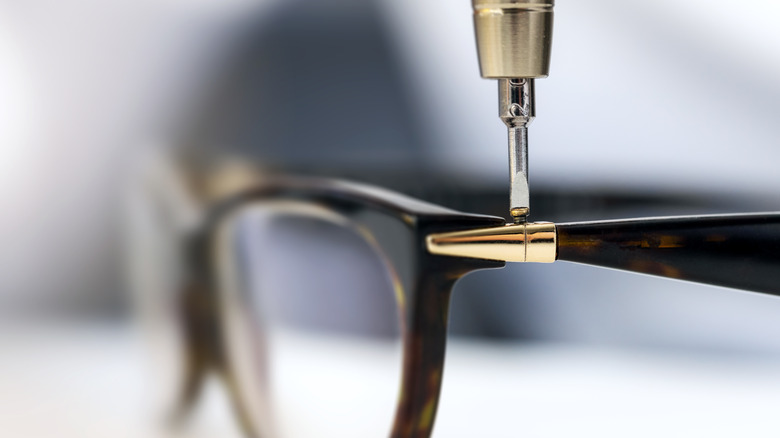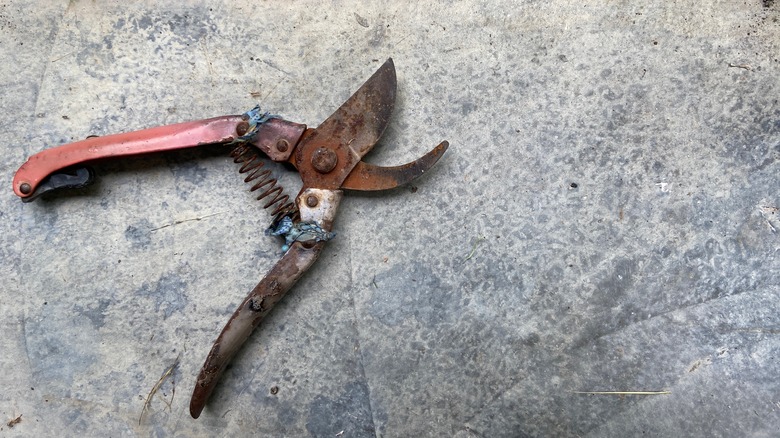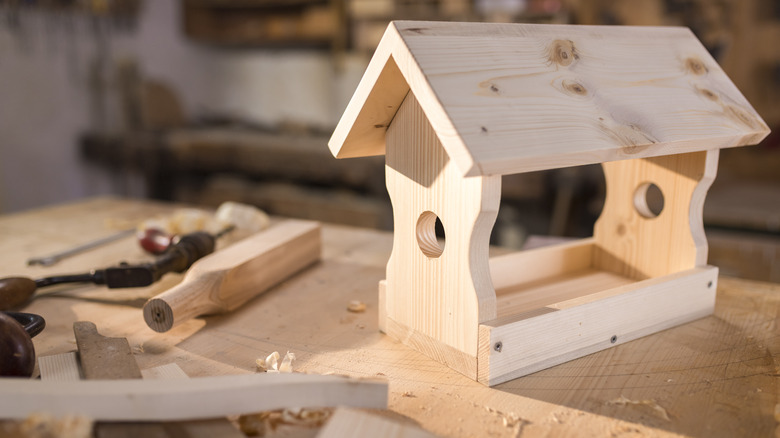All The Unusual Ways You Should Be Using A Nail File Around The House
Nail files are absolutely essential to have around the house, especially if you prefer to have long nails or frequently find yourself facing chips or snags, but their usefulness isn't limited to just at-home manicures. After a bit of examination, you'll come to realize that nail files aren't all that different from another common household tool that you're much more likely to find in your toolkit than packed with your toiletries: sandpaper. As a matter of fact, cardboard nail files include coatings that range from 240 to 80 grit, which provides a fairly wide variety of options that span from coarse to fine.
While it's unlikely that you'll use a nail file instead of sandpaper to finish your next major building project, the tiny size, low price, and high level of accessibility of these manicure tools can certainly come in handy in some unexpected situations around the house. They can get into awkward corners, help file down pieces that require a delicate hand, and even save you a trip to the hardware store in some cases. Who knows — after seeing some of these ideas, you might just have to start including a nail file in your toolkit.
Smooth lumpy paint
When you're doing a quick paint job — or living with the results of a sloppy landlord special — you can end up with areas that dry with unwanted texture, unsightly drips, and even annoying cracks. If this issue is just in a small area, consider using a nail file to help do a bit of cleanup. Spots where paint was piled on or poorly applied can be gently filed down until they're smooth, then either painted over or left as-is. Just make sure you don't go too deep, as there's a fine line between achieving a smooth wall and accidentally damaging the material underneath the paint.
Sharpen small tools
With frequent use, anything will wear out, and even the tiniest of tools are no exception to this rule. With the help of a nail file, however, you can restore these items to their former glory, ensuring they perform well in whatever task you need them for. This mini sharpening board is perfect to bring a point back to needles, increase the precision of tweezers, and even breathe life back into small knives. Use caution when you're sharpening — even though these tools are small, playing around with a sharp point of any size is a recipe for injuries.
Remove stains from suede
While it might be a beautiful, luxurious material, suede is notoriously difficult to maintain, whether it's used to make shoes, cover a couch, or even upholster seats in the car. Because it's a natural material and doesn't do well when submerged in water, it's best to stick to dry cleaning methods whenever possible. One such method involves using a nail file to help lift scuffs and stains. If you notice a discolored spot on the suede, gently rub the nail file back and forth with light pressure until the spot begins to clear away and you're left with a spotless surface.
Smooth leftover glue
Nobody's perfect, and there are few situations where this fact is more apparent than when you're using glue in a crafting project. Whether you're attaching rhinestones to a blinged-out decoration or securing two pieces of wood together, a little bit of glue will inevitably end up somewhere you don't want it, whether on your hands or the craft itself. If it can't be easily washed away, a nail file could be just the remedy you need. Gently file away at the glue, making sure to use extra caution if you're removing it from your skin, and you should be mess-free in no time.
Sharpen pencils
Pencils are an absolute necessity for just about any project where you need to be able to erase and change your markings as you go, but, despite their functionality, pencils and pencil sharpeners are becoming increasingly less common as many people transition to more digital forms of note-taking. As a result, it's not shocking that you might find yourself in a situation with a broken pencil and no sharpener on hand. Luckily, a simple nail file can come to the rescue, helping you work your writing utensil to the perfect point in a pinch.
Restore erasers
After being put to use for removing mistakes and floating around in a pencil bag, erasers can start to look a little worn and dirty. This, of course, doesn't detract much from their functionality, but if you want to ensure all of your office or school supplies are in tip-top shape, a marked-up eraser can be frustrating. Luckily, this issue can be fixed with a little help from a nail file. Use the file to gently wear away the top layer of the eraser, taking the grime away with it. After working your way around the eraser, it should look brand new in no time.
Open stubborn packages
If you prefer metal nail files to cardboard ones, you're in luck, as these tiny manicure tools can help to open plenty of different items around the house. Most metal nail files have a slightly pointed end to help clean under the nails, but this point is also perfect for slicing open envelopes and cutting through the tape on packages. Additionally, these metal sticks are great to use if you need to remove a shrink-wrapped plastic layer on a bottle, if you need to peel off a label, or if you need to pop open a piece of stubborn perforated cardboard that won't seem to budge.
Glasses repair tool
When it comes to most minor issues with your glasses or sunglasses, they're pretty easy to repair on your own. If you have the correct tools, that is. A tiny screwdriver is all it takes to tighten, loosen, or reattach your glasses' arms, but many people don't have this little tool. If you have a metal nail file, however, you might just be able to complete your task. Thanks to the thinness of these files and their slightly pointed ends, they can act as a makeshift screwdriver if you don't have one on hand, even if your job requires you to work on a super small scale.
Remove small rust spots
Major rust issues take quite a bit of TLC to remedy, but if you only have small specs of rust here and there that you don't want to spread, try filing them away with a nail file. This is a great hack for items where the rust is still surface level and more of an eyesore than anything else, like tiny spots on gardening tools after you forgot to wipe them down, places where the paint has slightly chipped and left metal furniture exposed to the elements, or even minor discoloration on cooking utensils and pans.
Sanding small wood projects
Nail files might not be the most efficient way to sand large woodworking projects, but they can certainly get the job done on smaller ones. Small crafts like DIY birdhouses, toys, and boxes don't have a ton of surface area and often feature smaller details, meaning something tiny like a nail file instead of a large sheet of sandpaper could be the perfect fit. With this approach, you'll have more control over what and where you're sanding, and you'll get the chance to get into all of those smaller nooks and crannies that you might miss with traditional sandpaper.
